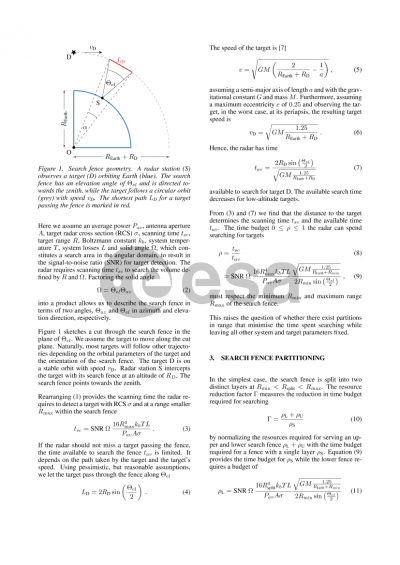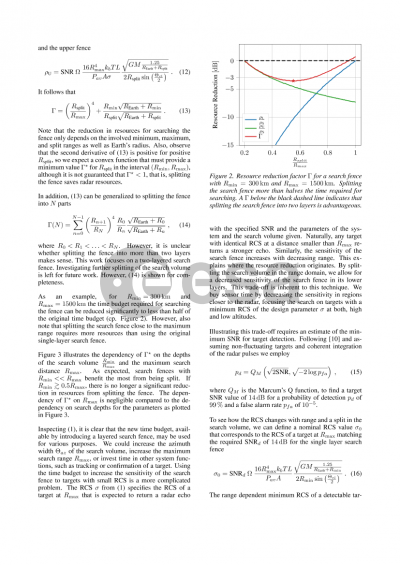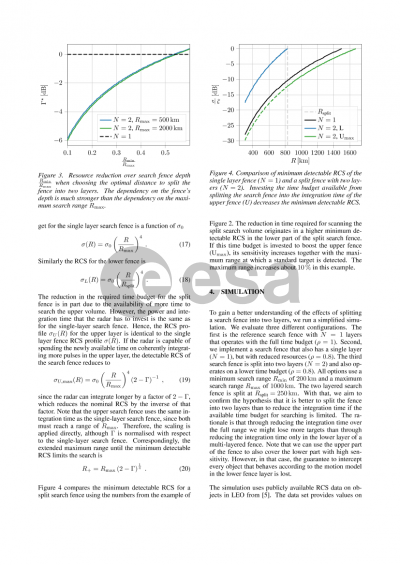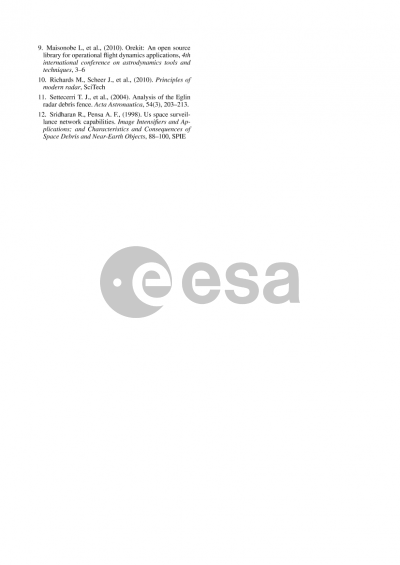Document details

Abstract
Radar is a valuable asset for near-Earth space situational awareness. Due to its all-weather capability and ability to cover a large field of regard it is particularly useful for finding new targets that are not yet known from previous observations or an external catalogue. A common mode of operation is to have the radar repeat a fixed beam pattern, forming a search fence that captures unknown targets in a systematic way. This search fence is designed to detect all targets within its predetermined search volume with a given probability. The exact configuration of the radar depends on its capabilities and a target model. Each beam in the set of beams that constitute the search fence has its individual dwell time such that a target will be detected up to a predetermined range. In addition, the fence’s beam pattern must repeat within a set time, such that all targets crossing the fence are captured. The limited time and power budget of the radar then creates a trade-off between the maximum range and angular space that the search fence can cover to find targets specified by the target model. Operating a radar with such a search fence may not make the best use of the sensor's available resources.
This paper considers a technique where the radar’s search beam pattern is augmented to include two search fences that are stacked at different ranges within the same angular search space of the radar. Assuming circular orbits, targets at low altitudes are expected to spend less time within the search fence because they move faster and travel a shorter distance to cross the search fence. Conversely, targets at higher altitudes are expected to move more slowly while travelling a larger distance within the search fence. Thus, low altitude targets require a shorter dwell time and the radar must revisit the beams of the search fence more quickly. For high-altitude targets, the radar requires a longer dwell duration, but it also has more time available to cover the entire search fence. Hence, there is the potential to divide the search space up into two separate range domains. One fence covers the search space from a minimum to a cut-off distance, while the second fence finds targets at ranges greater than the cut-off distance.
This work describes a method to find optimized parameters for a stacked search fence and conducts a simple simulative study using publicly available data on low Earth orbit targets to compare the stacked search fence with its non-stacked version. The study highlights the advantages and disadvantages of the stacked search fence and shows that it does indeed find more targets at higher altitudes. However, the search fence also loses sensitivity when searching at low altitudes. In conclusion, there is a trade-off when designing a search fence where the effective range of the search can be increased for targets with larger radar cross section (RCS) than assumed in the target model, but consequently the probability of detecting small RCS targets is reduced.
Preview








